The Benefits of Tele-ICU
 The unprecedented COVID-19 pandemic has offered a stark reminder, if one were needed, of the unique advantages of telemedicine – and tele-ICU services in particular.
The unprecedented COVID-19 pandemic has offered a stark reminder, if one were needed, of the unique advantages of telemedicine – and tele-ICU services in particular.
Doing more with less has been the mantra in the healthcare industry for many years now. The pandemic has shown that tele-ICU services can help hospitals effectively overcome the national shortage of intensivist, continue to provide exceptional critical care even during the most challenging of times
An April 2, 2020 Advisory Board post cites a Wall Street Journal article titled “How Hospitals in Covid-19 ‘hotspots’ are leveraging tele-ICUs” (https://www.advisory.com/daily-briefing/2020/04/02/tele-icu). The article describes how New York’s Northwell Health used tele-ICU services to monitor more than 130 ICU beds, 116 of which were COVID-19 patients, across the system’s 23 hospitals.
As the number of COVID-19 patients increase, the tele-ICU technology will allow Northwell to increase its number of ICU beds from 170 to 420. “That’s the beauty of Tele-ICU: One person sitting in a Tele-ICU center can take care of 50 to 100 beds,” said Saurabh Chandra, medical director of telehealth services at the health system.
According to the article, Swedish Health System in Seattle used tele-ICU technology to limit healthcare workers’ exposure to COVID-19 – including their intensivists – and to keep people out of the hospital.
Elizabeth Meade, the medical director of pediatric quality and safety at Swedish, said that of all the programs in place to help mitigate provider shortages at Swedish, she thinks “the tele-ICU capacity is the most important one at this time.”
Of course, the nationwide shortage of intensivists – and the ever-increasing costs associated with providing ICU services – long pre-date the COVID-19 pandemic. And they will undoubtedly continue long after the pandemic eventually disappears. In fact, the shortage of intensivists is expected to equal 25% of demand by 2030, primarily due to the aging of the US population.
Here are some of the reasons why tele-ICU services provided by Intercept Telehealth are the answer for hospitals struggling to staff their ICUs with intensivists and keep their costs manageable:
- Our remote, tele-ICU services connect intensivists and multispecialty physicians from different locations to patients in ICUs 24/7, helping to deliver advanced critical care for better health outcomes and faster recovery. Research shows that a majority of certified intensivists are part-time ICU physicians who are unable to provide undivided attention towards patients, which could result in higher health complications and increased mortality rate in ICUs.
- Our intensivists are experienced in diagnosing the criticality of illnesses in patients based on access to far greater amounts of vital trend data which dramatically reduces ICU complications. They have specialized expertise in such disciplines as anesthesia critical care, critical care medicine, pediatric critical care, surgical critical care and pulmonary critical care to conduct medical or surgical therapies and improve the health outcomes of critically ill patients.
- Remote or tele-ICU monitoring solutions like ours can help reduce the cost of staffing hospital ICUs. According to a research study from the Emory Critical Care Center in Atlanta, implementing the tele-ICU staffed with consultant intensivists and a dedicated critical care team resulted in a $4.6 million cost savings for the hospital. Hospitals can achieve better revenue returns through 24/7 remote monitoring for critically ill patients with a network of remote intensivists and a critical care team.

